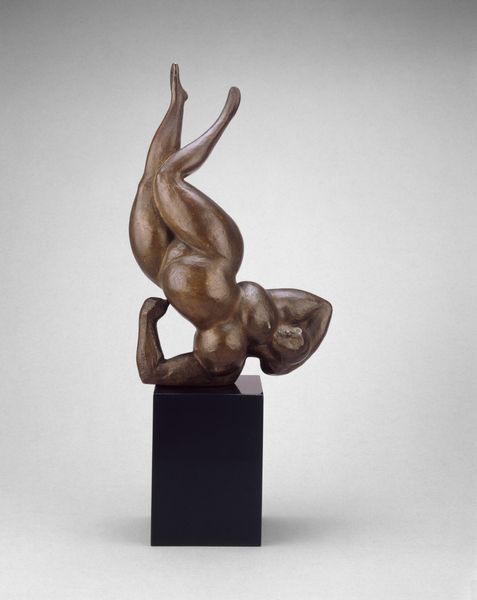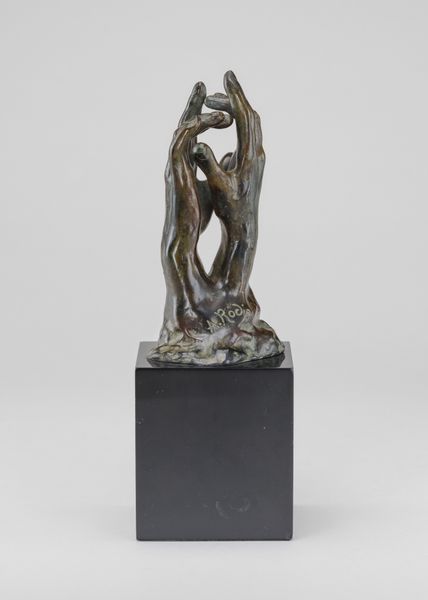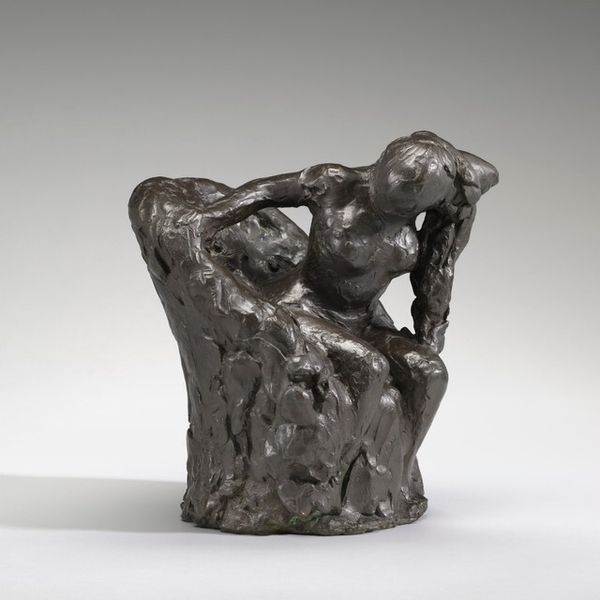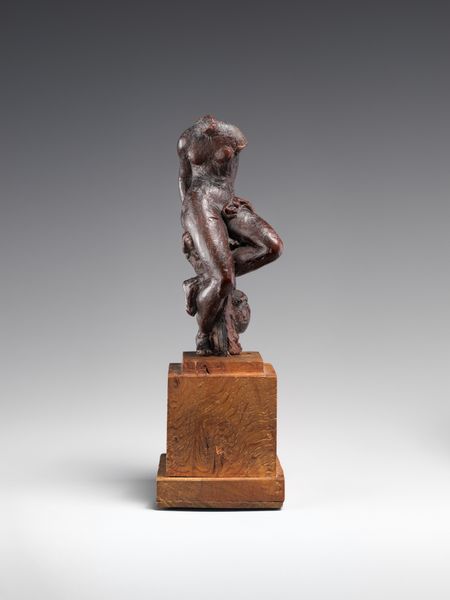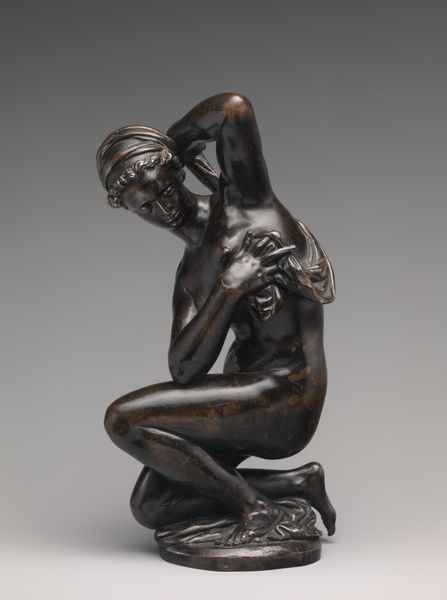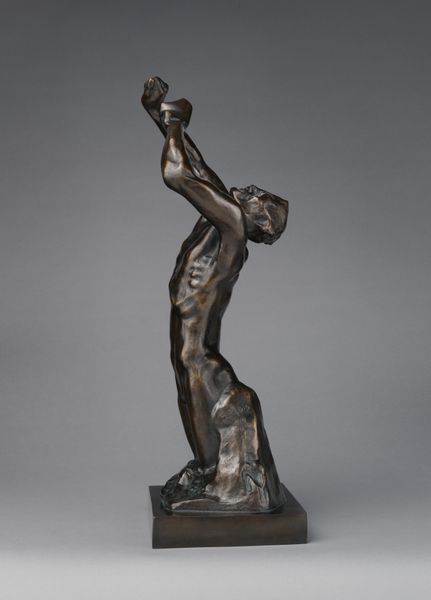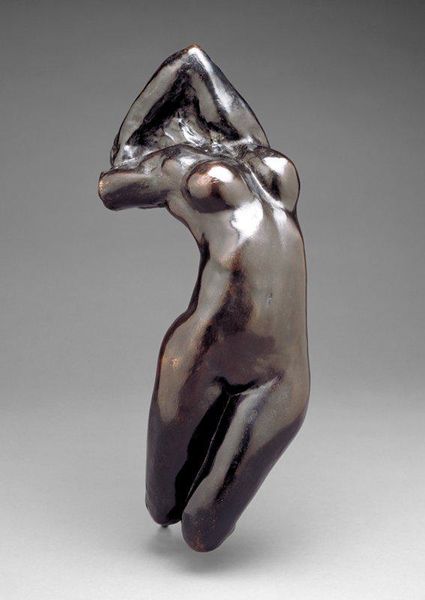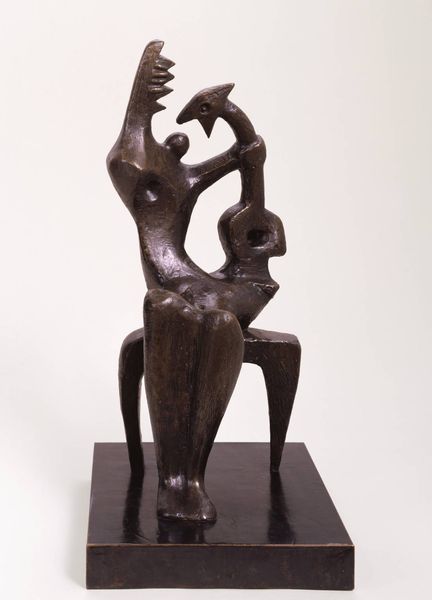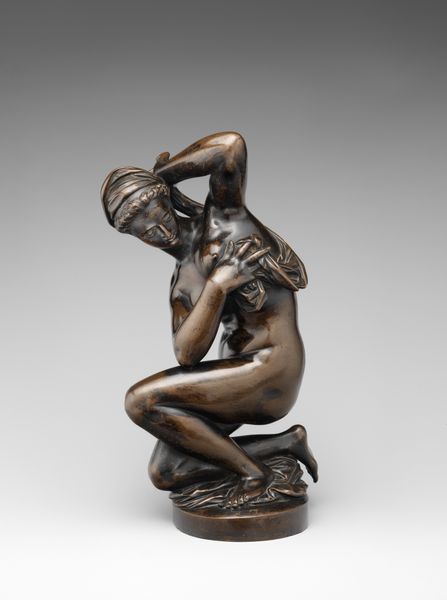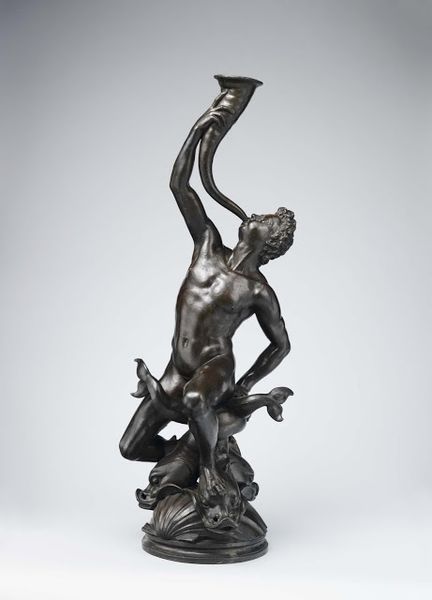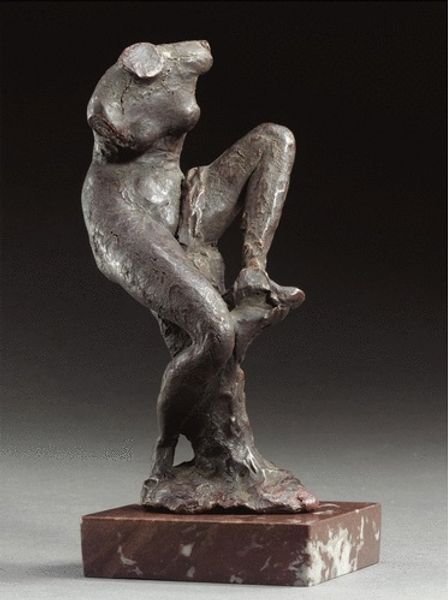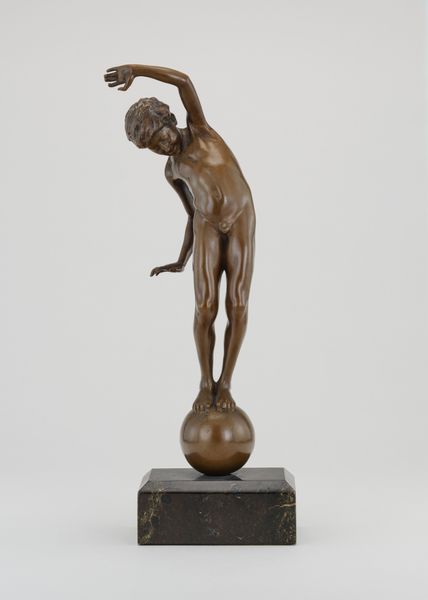
Dimensions: 27.3 x 16.5 x 8.9 cm (10 3/4 x 6 1/2 x 3 1/2 in.)
Copyright: CC0 1.0
Curator: Let's discuss Gaston Lachaise's "Acrobat," a bronze sculpture held at the Harvard Art Museums. What springs to mind when you see it? Editor: A sense of exuberance, oddly enough. The figure’s inverted pose seems to defy gravity, almost joyful. Curator: Lachaise, a master of material, cast this figure, emphasizing the weight and volume of the body. The bronze, traditionally associated with monuments, is here used for a more intimate, personal subject. How does that affect its reception, do you think? Editor: It elevates the everyday, the physical. The acrobat becomes an emblem of human potential, not unlike classical depictions of athletes, but rendered with a modern sensibility. It’s sensuous, too, the curves almost like fertility symbols. Curator: The sculpture challenges traditional academic notions of beauty. It celebrates the corporeal and the capabilities of the human form, while also hinting at the societal role of performance and the artist's own labor in its creation. Editor: I find it revealing how Lachaise utilizes a seemingly simple pose to tap into a deeper well of cultural and personal meanings. Curator: Indeed, it's a powerful testament to the enduring strength of bronze as a medium for expressing both the physical and the symbolic. Editor: A thought-provoking piece, offering much to consider beyond its immediate appearance.
Comments
No comments
Be the first to comment and join the conversation on the ultimate creative platform.
